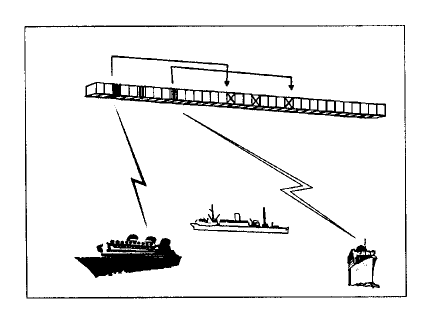1 AIS operates primarily on two dedicated VHF channels
(AIS1 – 161,975 MHz and AIS2 – 162,025 MHz). Where these channels are not available
regionally, the AIS is capable of automatically switching to alternate designated
channels. However, this capability should only be considered for use in urgent,
temporary situations, noting the possible adverse effects on AIS at sea.
2 The required ship reporting capacity according to the IMO
performance standard amounts to a minimum of 2000 time slots per minute (see figure 1
below). The ITU Technical Standard for the Universal AIS provides 4500 time slots per
minute. The broadcast mode is based on a principle called (S)TDMA (Self-organized Time
Division Multiple Access) that allows the system to be overloaded by 400 to 500% and
still provide nearly 100% throughput for ships closer than 8 to 10 NM to each other in a
ship-to-ship mode. In the event of system overload, only targets far away will be
subject to drop-out in order to give preference to targets close by that are a primary
concern for ship-to-ship operation of AIS. In practice, the capacity of the system
allows for a great number of ships to be accommodated at the same time.

Figure 1 - Principles of TDMA